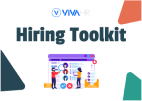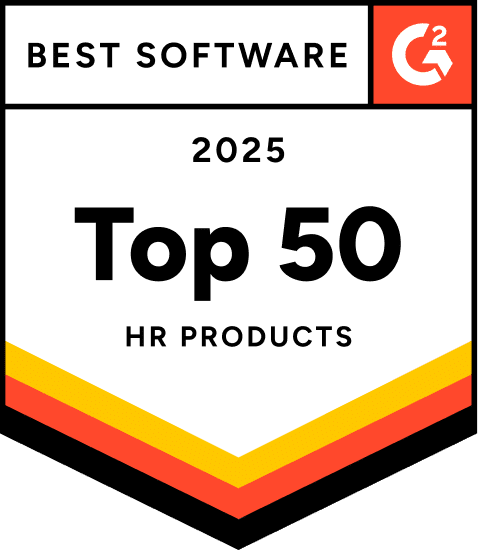Home » Industry News 2 » Recruiters Use Visual Platforms to Attract Younger Talent
Tuesday, September 16th, 2025
Imagine a recruiter sifting through a stack of résumés, each one a monotonous list of skills and dates. Now picture a vibrant TikTok video where a team shares a day in their bustling office, or an Instagram story that flashes a company’s quirky culture. Which one pulls you in? For the Gen Z and Millennials reshaping today’s workforce, the answer is clear. Recruitment is no longer about static job postings it’s about storytelling through visuals, where a single image or clip can spark a connection that words alone can’t.
The global recruiting market, valued at an impressive $642.28 billion in 2025, is projected to soar to $924.29 billion by 2030, with a steady 7.56% compound annual growth rate. This growth reflects a robust recovery in talent acquisition spending, fueled by employer’s renewed confidence after economic fluctuations. The surge is driven by three key trends: the widespread adoption of AI for automating candidate sourcing, the rise of the gig economy normalizing freelance hiring, and a shift toward skills-based recruitment that prioritizes ability over credentials. These forces work in tandem AI swiftly scans vast talent pools, while skills-focused platforms match freelancers to projects in hours, not weeks, transforming how companies build their teams.
The Power of Visual Recruitment
Gone are the days of dry job listings on text-heavy boards. Recruiters are now embracing visuals think video interviews, vibrant company culture clips, and image-driven job posts to capture the attention of younger candidates. The online recruitment technology market, valued at $13.20 billion in 2024, is expected to grow to $37.76 billion by 2032, boasting a 13.9% CAGR. This boom stems from the need to manage the 7.3 million job openings reported by the Bureau of Labor Statistics in June 2019, a demand that has only intensified. Online platforms streamline everything from résumé management to candidate assessments, driven by digital transformation and the evolving nature of work in the fourth industrial revolution.
Social media platforms like Instagram, TikTok, and YouTube have become recruitment goldmines. A quick TikTok clip showcasing a team’s brainstorming session or an Instagram reel highlighting flexible work perks can resonate deeply with younger job seekers. These platforms deliver engagement rates that traditional methods can’t match. Companies are crafting visual stories that feel authentic, not like polished corporate ads, giving candidates a real sense of what it’s like to work there. It’s no wonder recruiters are doubling down on these tools to stand out in a crowded market.
Success in Action
Consider a major retail brand that turned to Instagram to attract younger talent. Their campaign featuring short reels of employees sharing stories about mentorship and creative freedom drew thousands of applications from Gen Z candidates. The videos weren’t overly polished; they felt real, like a friend sharing a glimpse of their workday. Similarly, a tech startup used TikTok to post 15-second clips of engineers joking about debugging sessions and offering quick application tips. The result? A surge of applications from coders who felt an instant connection to the company’s vibe.
Tools like AvaHR, a leader in applicant tracking and hiring automation, make these strategies accessible to smaller businesses. The recruitment software market, worth $3.30 billion in 2025, is set to reach $6.20 billion by 2032 with a 9.4% CAGR, driven by the need to streamline hiring and cut costs. AvaHR’s AI-powered features, like chatbots for screening and analytics for hiring decisions, let recruiters manage applications from social mediaİT campaigns as easily as those from traditional job boards. This levels the playing field, allowing small and medium-sized businesses to compete with industry giants.
Navigating the Challenges
Visual recruitment isn’t without hurdles. While platforms like TikTok draw massive audiences, reaching the right candidates requires precision. A viral video might generate buzz, but if it’s not tailored to the role, recruiters end up wading through unqualified applications. Social media algorithms can also bury carefully crafted posts, and the demand for fresh, trendy content is relentless. Staying relevant means keeping up with platform trends, which can strain resources, especially for smaller teams.
Then there’s the risk of bias. Visual campaigns that lean too heavily on a specific aesthetic say, a youthful, urban vibe might alienate older candidates or those from diverse backgrounds. Recruiters must ensure their content reflects the full spectrum of their target talent pool to avoid unintentional exclusion. Tools like AvaHR help mitigate this by offering analytics to monitor applicant diversity, ensuring campaigns don’t skew too narrowly.
The Rewards of Going Visual
The benefits of visual recruitment are undeniable. Videos and images let companies showcase their culture in ways that resonate emotionally with candidates. A well-crafted Instagram post can convey collaboration or innovation better than any job description. This authenticity attracts candidates who align with a company’s values, leading to better hires and lower turnover. The online recruitment platform market, valued at $51.53 billion in 2024, is expected to hit $102.70 billion by 2030 with a 12.17% CAGR, as companies embrace tools that streamline job posting, sourcing, and onboarding.
Visual platforms also save time. Video interviews allow recruiters to assess communication skills early, reducing the hours spent on initial screenings. For small businesses, this efficiency can cut reliance on costly recruitment agencies or traditional ads, freeing up budgets. A strong visual presence also boosts employer branding, a critical factor for younger candidates who often prioritize culture over salary. In a competitive talent market, this can make all the difference.
A Vision for the Future
Visual recruitment is just the start. Emerging technologies like virtual reality could soon let candidates “tour” offices or “join” team meetings from anywhere. Augmented reality might overlay job details onto real-world settings, turning applications into immersive experiences. For now, platforms like AvaHR are helping recruiters stay ahead, offering automation to manage campaigns across platforms seamlessly.
For businesses, especially small and medium-sized ones, the path forward is clear: embrace visual platforms or risk fading into the background. Start with a few Instagram stories showcasing your team’s latest win. Experiment with video interviews to streamline screening. Use tools like AvaHR to tie it all together, ensuring your recruitment process is as dynamic as the talent you’re after. In a world where first impressions are everything, a compelling video could be the spark that lands your next game-changer.
Frequently Asked Questions
What are the main benefits of visual recruitment for businesses?
Visual recruitment offers several key advantages: it allows companies to showcase their culture authentically, leading to better cultural fit and lower turnover rates; it saves time through tools like video interviews that assess communication skills early in the process; and it significantly boosts employer branding, which is crucial for attracting younger candidates who often prioritize company culture over salary. Additionally, visual platforms can reduce reliance on costly recruitment agencies and traditional advertising methods, making recruitment more cost-effective for businesses of all sizes.
What challenges do companies face when implementing visual recruitment strategies?
The main challenges include the need for precision targeting to avoid attracting unqualified candidates, as viral content doesn’t always reach the right talent pool. Companies must also navigate unpredictable social media algorithms that can bury well-crafted posts and keep up with the relentless demand for fresh, trendy content. Another significant challenge is avoiding bias, as visual campaigns that focus too heavily on specific aesthetics may unintentionally exclude older candidates or those from diverse backgrounds, requiring careful monitoring to ensure inclusive recruitment practices.
Recruiters are leveraging visual platforms by creating authentic content that showcases company culture, such as TikTok clips of team brainstorming sessions, Instagram reels highlighting flexible work perks, and short videos of employees sharing their daily experiences. These platforms allow companies to move beyond traditional text-heavy job postings and create engaging visual stories that resonate emotionally with younger job seekers. The key is producing content that feels genuine rather than overly polished corporate advertisements.
Disclaimer: The above helpful resources content contains personal opinions and experiences. The information provided is for general knowledge and does not constitute professional advice.
You may also be interested in: Workable vs Zoho Recruit: Check Out the Alternative ATS
Struggling with slow hiring? Open roles drain time, overwork teams, and stall growth. AvaHR transforms recruitment: post to 100+ job boards in one click, track candidates with live dashboards, and collaborate seamlessly via email or SMS. Trusted by hundreds with a 4.9★ rating. Don’t let delays hold you back your next great hire is waiting! Start your free trial today no credit card needed or get a personalized demo to see AvaHR in action.
Powered by flareAI.co





